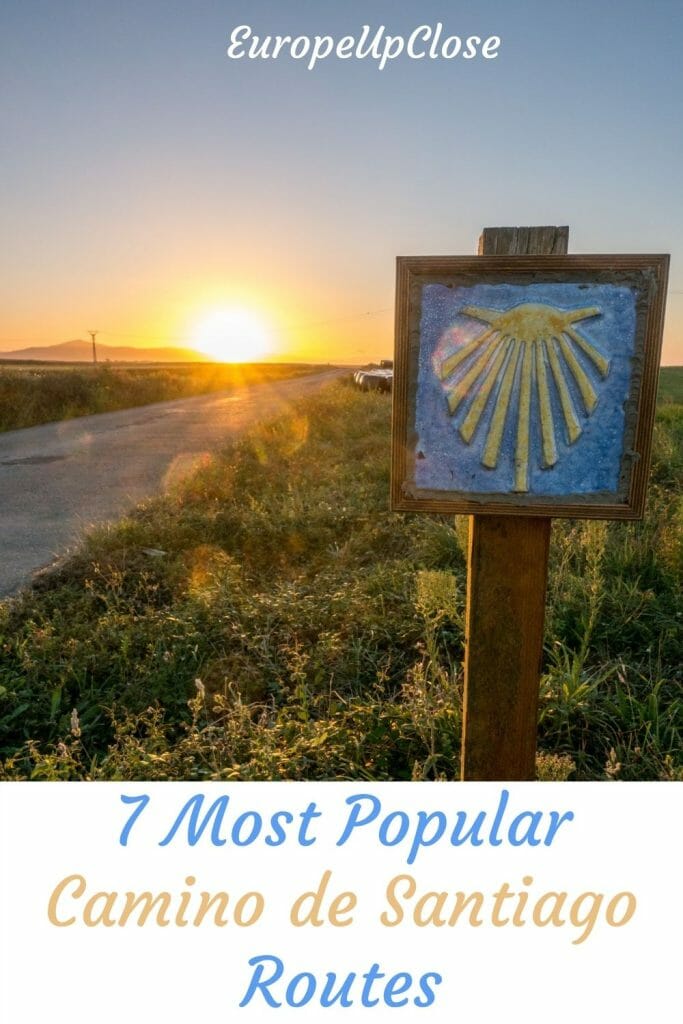The Camino de Santiago or the Way of St. James is one of the most popular pilgrimage routes in the world. Since the Middle Ages, pilgrims from all over the world have been walking the Camino de Santiago routes leading to Santiago de Compostella in Spain. Nowadays hundreds of thousands of people every year complete the pilgrimage to the tomb of St.James in Spain.
Unlike many people think the Camino de Santiago is not a single route but a network of trails. The Camino de Santiago routes start in different places and finish in Santiago de Compostela. As of February 2022 we’ve completed seven different Camino de Santiago routes: Camino Francés, Camino Portuguese (from Lisbon), Camino Primitivo, Camino del Norte, Camino Inglés, Camino Finisterre-Muxía, and Via de la Plata. In this post, I’ll compare the seven most-walked Camino routes.
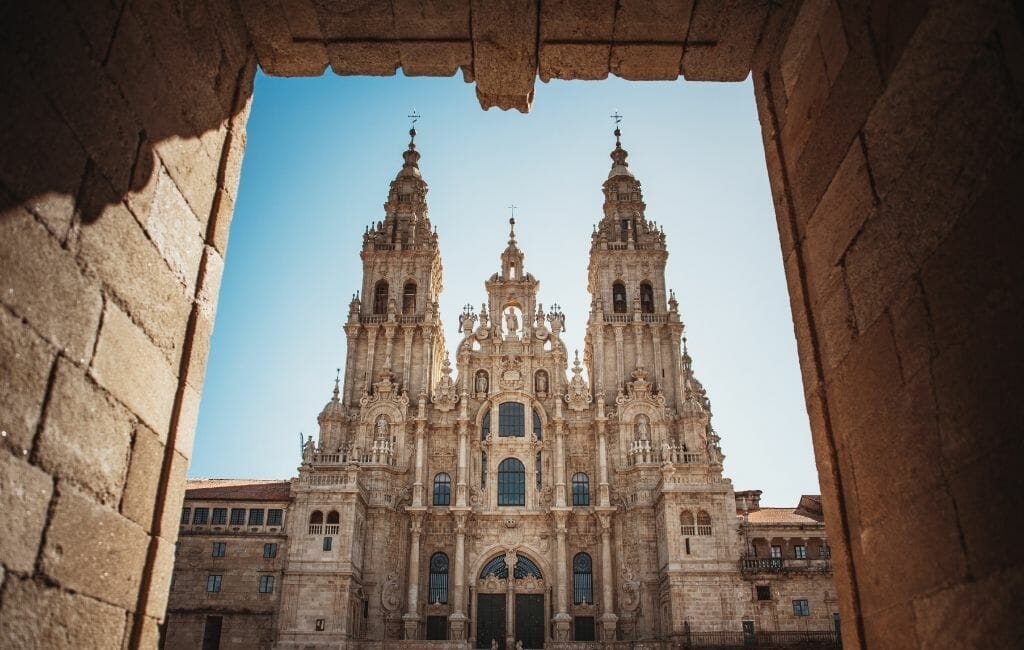
The 7 most popular Camino routes are arranged according to their popularity.
- Camino Francés – 54,6% of all pilgrims who arrived in Santiago de Compostela in 2019 completed this Camino
- Camino Portuguese (Central and Coastal Routes combined) – 27,2%
- Central Route – 20,8%
- Coastal Route – 6,4%
- Camino del Norte – 5,4%
- Camino Primitivo – 4,5%
- Camino Inglés – 4,5%
- Vía de la Plata – 2,6%
The Camino Finisterre is not included in the statistics. Pilgrims start walking in Santiago de Compostela and don’t register at the Pilgrims’ Reception Office after completing the route. According to the office in Finisterre in 2019 over 25 000 pilgrims completed this route.
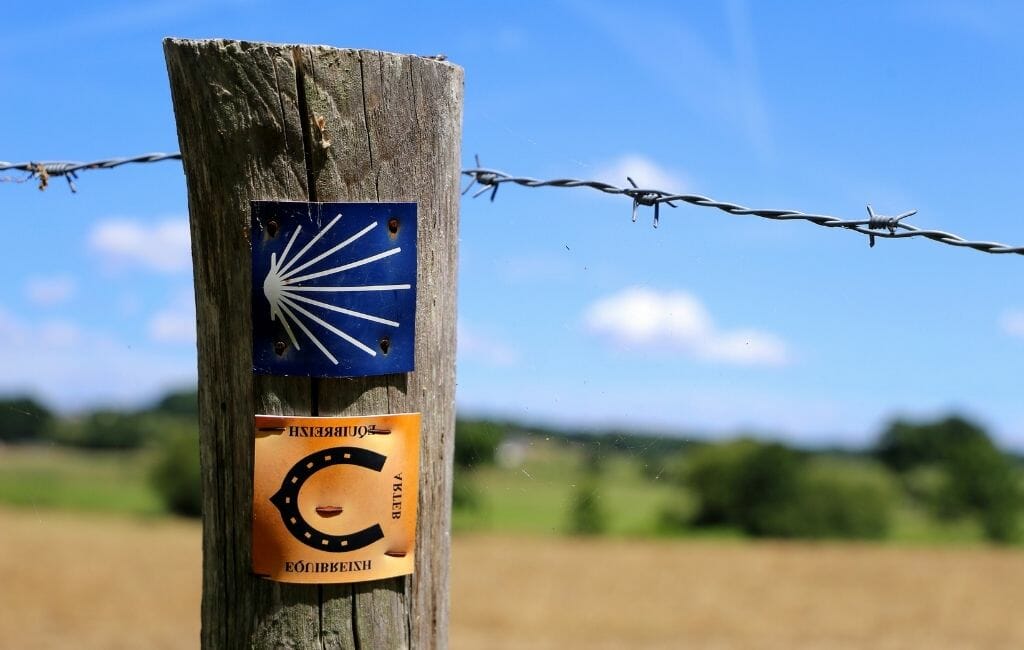
Camino Francés (the French Way)
Quick Info
Total distance – 770 km/478 mi
Number of days required – 30-35
Starting point – St.Jean Pied de Port, France
Finishing point – Santiago de Compostela, Spain
Difficulty – 4 out of 5
Best months for walking – April – June, and September – October; it’s nice and warm but not as hot and busy as it gets there in July and August.
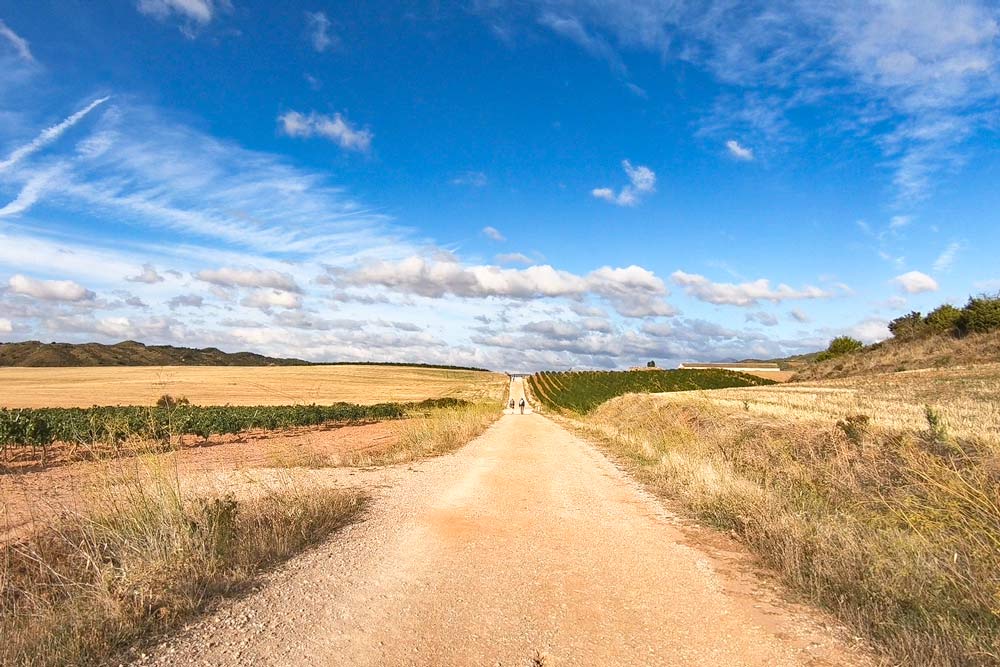
Camino Francés Overview
It’s far the most popular Camino de Santiago route. Half of all pilgrims who arrive in Santiago walk the Camino Francés. Many of those who complete this Camino walk only the last 100 km from Sarria and not the entire route from St.Jean Pied de Port. Most pilgrims walk this route as their first Camino probably because it’s the most famous one. For some people, the Camino Francés is a synonym of the Camino de Santiago.
I walked this route after completing 6 other Camino trails. Some parts I liked, some not that much. It’s a good route to walk for a first-timer. Most people I met on the route had never done any long-distance walking or hiking before. You won’t be the only struggling person on the route. Many people got blisters and were very tired after the first couple of days.
It’s possible to combine the French Way with the Camino Primitivo. The Camino San Salvador that starts in Leon and finishes in Oviedo connects two routes. From Oviedo, you can continue walking to Santiago on the Camino Primitivo. Check out this helpful Camino Francés walking itinerary>>

Likes:
It has the most infrastructure for pilgrims out of all Camino routes. There are many albergues, hotels, pensions as well as restaurants, bars, and cafes along the Camino. Due to its popularity, many albergues and hotels stay open all year (except Christmas time). It’s fine to walk the French Way off-season; you will be able to find accommodation.
It’s a budget-friendly route, there are many public albergues, and hostels for donation, accommodation works out very cheap. It’s a very social route. If you’re a solo pilgrim on this Camino you’ll easily find company after a couple of days.
Dislikes:
The obvious one is that the route is very busy. I walked this Camino in September and there were many people. Any time between May and September the French Camino is crowded. If you want to walk it without crowds you should go in April or October when the weather is still nice and there are significantly fewer people.
I know many pilgrims love this route and will disagree with me but I prefer walking along the coast, in the mountains, or through the forest. The famous Meseta, a large plain area in the middle section of the Camino, is not my kind of scenery. I enjoyed the very beginning of the Camino Frances the Pyrenees part and the walk over the pass to O Cebreiro.
Camino Portuguese
Quick Info
Total distance – Coastal Route (from Porto): 280 km/173 mi Central Route (from Porto): 260 km/161 mi
Number of days required – 12-14
Starting point – Porto, Portugal. Officially it starts in Lisbon but very few people start there
Finishing point – Santiago de Compostela, Spain
Difficulty – 3 out of 5 for both routes, 5 out of 5 for the route from Lisbon
Best months for walking – April – June, and September – October. May is our favorite month for walking this route. In April – May, when the fields are covered in wildflowers, the Camino is especially beautiful.

Camino Portuguese Overview
The Portuguese Camino has several route options. The majority of people start walking in Porto following the Coastal Route or the Central Route. Both routes merge in a couple of different places. It’s possible to switch between them. The Coastal Route goes along the coast all the way to Vigo in Spain. The Central Route goes inland from Porto to Santiago de Compostela. One more optional route on the Portuguese Camino is the Spiritual Way. It splits from the main route in Redondela and merges with it again in Padrón.
Not many pilgrims start walking in Lisbon, where the Portuguese Camino begins. The part of the route from Lisbon to Porto is more challenging with not many albergues and long distances between towns and villages. This section is not the best walking option for first-timers but a great route for cycling. Like on the Camino Frances many pilgrims walk the last 100 km/62 mi of the route starting from Tui, a small Spanish town on the border with Portugal.

Likes
A possibility to combine different routes and be able to switch between them. Walking one Camino you get to see two countries; Portugal and Spain. Many affordable accommodation options, especially on the Central Route. Cheap coffee in Portugal, we’re big coffee addicts and love stopping several times a day to drink coffee. In Portugal, you pay between 0,6 and 1 Euro for a cup of coffee. Beautiful sandy beaches and small fishermen villages (Coastal Route).
Dislikes
It gets quite busy in the summer. If you decide to walk the Portuguese Way in the peak season and don’t want to stress out about finding accommodation, I’d advise booking private albergues or hotels in advance.
We didn’t like the part of the Coastal Route near Vigo because there was a lot of walking next to the road and through industrial areas. You can easily skip that part from Caminha walk to Valença and continue on the Central Route. Whichever route you take there is quite a lot of walking on surfaces like asphalt or cobblestones which are hard on your feet and knees.
Camino del Norte (the Northern Way)
Quick Info
Total distance – 865 km/537 mi
Number of days required – 33-35
Starting point – Irun, Spain
Finishing point – Santiago de Compostela, Spain
Difficulty – 5 out of 5, one of the longest Camino routes in Spain with many hills and mountains.
Best months for walking – Summer is the best time for walking the Northern Way not only because of good weather.

Camino del Norte Overview
Many public albergues in the Basque Country are open only in the summer months between June and August. Outside of these months, you’ll have to stay in private albergues, hostels, or hotels. I walked this Camino in October, the weather was great but the first-week accommodation was more expensive than on any other Camino.
Out of all the Camino routes that I’ve walked, the Camino del Norte is one of my favorites. I liked the scenery a lot. As I mentioned in the part about the French Camino, I enjoy walking along the coast. This route has more coastline than other Camino de Santiago routes combined.
The Camino del Norte has significantly fewer people than the French Way or the Portuguese Camino. Most people who walk the Northern Way start in Irún. It’s not very popular to walk the last 100 km/62 mi to Santiago on this route. Some people worry that this route is not well-marked and is difficult to follow. I didn’t notice that. From the very beginning till the end yellow arrows and shells indicate the way like on any other Camino.
It’s possible to combine the Camino del Norte with the Camino Primitivo. There is a route split just before Gijón. The inland route goes to Oviedo from where you can continue walking to Santiago on the Camino Primitivo. The Camino del Norte merges with the French Way in Arzúa, a small town about 40 km/24,8 mi before Santiago de Compostela.
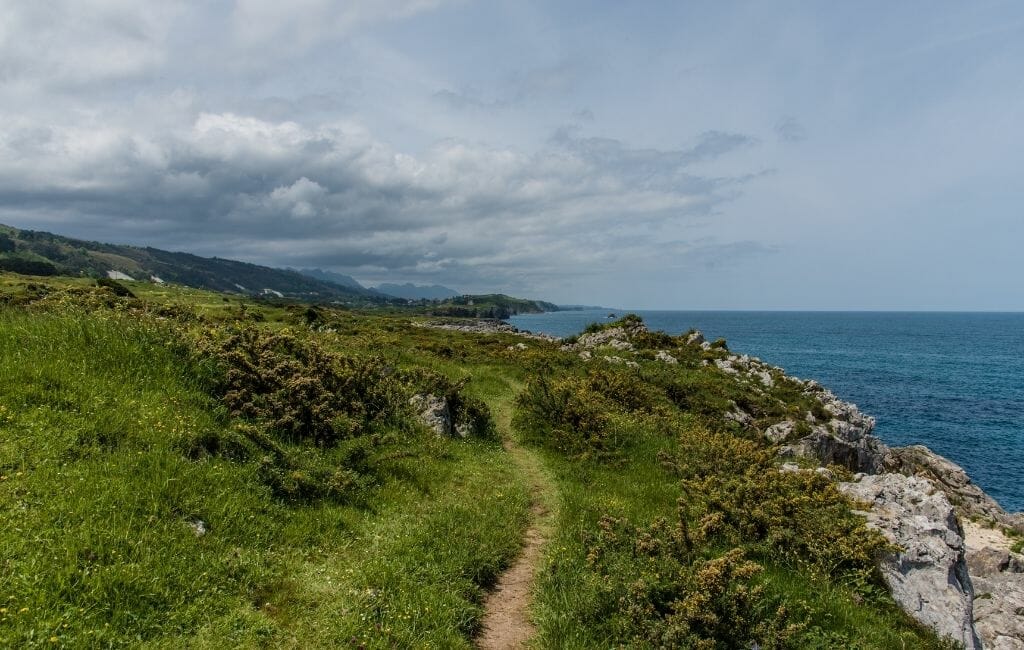
Likes
Breathtaking scenery; sandy beaches, rugged coastline, dramatic cliffs, beautiful bays, stunning views of the sea. Delicious food in the Basque Country and Cantabria. The pinchos are a must-try there. Beautiful cities; San Sebastian, Bilbao, Santander, Gijón any of these places is a holiday destination on its own.
Dislikes
Many public albergues in the Basque Country are open only in July and August. Pilgrims stay in private albergues/hostels or hotels which makes it more expensive. The stage between Gijón and Avilés in Asturias is quite unpleasant; most of the day you walk next to the highway/road and through industrial areas. It’s one of the days that can be skipped, many pilgrims take a bus for this section.
Camino Primitivo (the Original Way)
Quick Info
Total distance – 321 km/200 mi
Number of days required – 12-14
Starting point – Oviedo, Spain
Finishing point – Santiago de Compostela, Spain
Difficulty – 4 out of 5, this route is considered to be the toughest Camino due to many ascents and descents along the route but because of its relatively short distance. I can’t say it was tougher than the Camino Francés.

Camino Primitivo Overview
The Camino Primitivo is the route that is high on the list of my favorite Camino routes. It’s the oldest Camino route. The Original Way was the first Camino de Santiago ever walked. In the 9th century Spanish king, Alfonso II walked from Oviedo to Santiago de Compostela to commemorate the discovery of the tomb of Apostle St.James.
The Camino Primitivo together with the Camino del Norte and the Camino Frances is a part of the Northern Camino de Santiago network. In 1993 the Northern Caminos were added to the UNESCO World Heritage List. The Original Way is the closest to the actual hiking route out of the 7 Camino routes discussed in this post.
Most of the time the trail goes through the forest and over the mountains with very few towns and villages along the route. This Camino is a real in-nature experience. Pilgrims see towns at the start and at the end of every day. The only biggish cities on the Camino Primitivo are Oviedo, Lugo, and Santiago de Compostela. This route merges with the Camino Francés in Melide, about 52 km/32,3 mi before Santiago.

Likes
The scenery; lush green forest, beautiful mountains, many small rivers, waterfalls and creeks, charming local villages. Very friendly and helpful locals. Not that on other routes people are not friendly but on the busier routes sometimes it feels like locals are fed up with pilgrims because there are thousands of them passing by every day. It’s not like that on the Camino Primitivo. The tranquility of the route; not many pilgrims, not many cars, not many people in general.
Dislikes
It is not a good route to walk if the weather is bad. It rains a lot in the mountains in Asturias, the route gets very muddy and slippery. Due to not many towns and cities some days it’s difficult to find fresh fruit or vegetables. There are restaurants and bars where you can get food but not many of them serve vegetarian or vegan dishes.
Camino Finisterre-Muxía
Quick Info
Total distance – to Cape Finisterre – 89 km/55 mi, to Cape Muxía – 86 km/53 mi
Number of days required – 4-6
Starting point – Santiago de Compostela, Spain
Finishing point – Finisterre or Muxía, Spain
Difficulty – 2 out of 5
Best months for walking – Galicia is the rainiest part of Spain; it can rain here at any time. Summer months, June to September, are warmer with fewer chances of rain.

Camino Finisterre-Muxía Overview
The Camino Finisterre-Muxía is the only Camino route that starts in Santiago de Compostela. It’s known as the extension trail. Most pilgrims walk it after completing one of the other Camino routes but it can be walked as a separate Camino. There are two points along the coast; Finisterre and Muxia. Pilgrims can walk to one of them or both, there is a 25-kilometer trail that connects two capes.
For completing this Camino pilgrims don’t get the Compostela certificate. They can get a different certificate; Finisterrana in Finisterre or Muxiana in Muxía.
This Camino is a good one to walk for those who don’t have enough time to walk any other route or just want to try the Camino to see if they like it before starting a longer pilgrimage journey. The route is beautiful, especially the part of the Camino near the coast. The Camino has all the infrastructure including route marking (yellow shells and arrows), public and private albergues, hotels, and many restaurants.
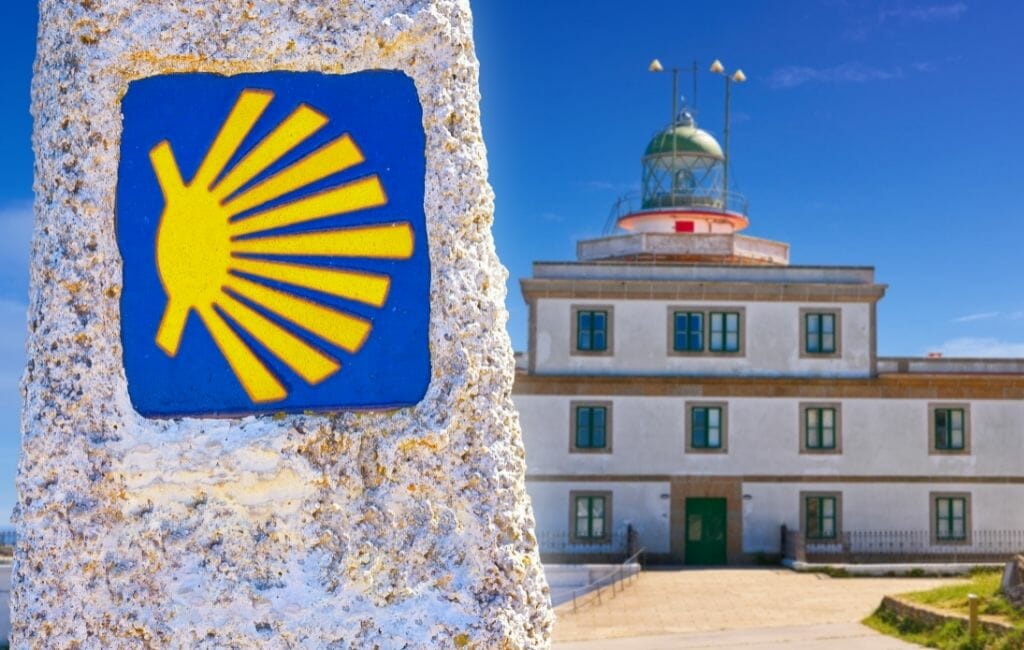
Likes
Beautiful scenery; lush green Galician forest, sandy beaches, rugged coastline, etc. A short distance, it’s a great Camino to walk over a short holiday or a long weekend.
Dislikes
Unpredictable weather if you’re unlucky you might walk the entire Camino under the rain. Rain is typical for Galicia in general but because this route is so short you might not even get one nice day.
Camino Inglés (the English Way)
Quick Info
Total distance – 116 km/72 mi
Number of days required – 5-6
Starting point – Ferrol, Spain
Finishing point – Santiago de Compostela, Spain
Difficulty – 2 out of 5
Best months for walking – The route goes through Galicia, the rainiest part of Spain. Summer months, June to August, are the best time for walking this Camino. We walked it at the beginning of June and the weather was great.
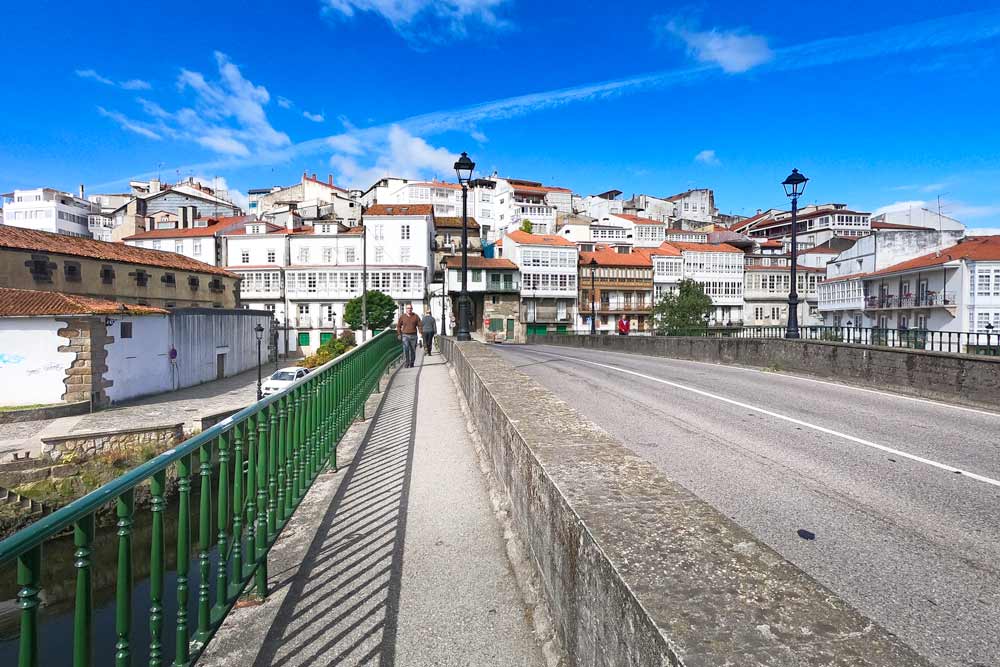
Camino Inglés Overview
The Camino Inglés is the shortest route of the Camino de Santiago that finishes in Santiago de Compostela. It is gaining popularity; every year more and more people choose this route. According to the Pilgrim’s Office in Santiago in 2019, 15780 people walked the English Way. This route like the Camino Finisterre is a great option to walk as a Camino trial to see if you like it or not before attempting a longer route. It takes only 5 days to complete but it’s long enough to see if walking the Camino is something you’ll enjoy.
There are two starting points: Ferrol and A Coruña. Most pilgrims start in Ferrol because the distance from there is more than 100 km/62 mi, the required minimum for getting the Compostela certificate. From A Coruña it’s only 74 km/46 mi. There are no big cities on this route, it’s more of a rural experience walking through Galician forest, pasture fields, and small villages.
Likes
A short route that can be easily fit as a part of a holiday or done over a long weekend. Not very busy, you rarely see other pilgrims walking. A couple of really beautiful and non-touristy towns.
Dislikes
Nothing really, it’s maybe not the most impressive route with stunning views but overall it’s a nice and I’d say relaxing experience.
Vía de la Plata (the Silver Way)
Total distance – 1000 km/621 mi
Number of days required – 40-45
Starting point – Seville, Spain
Finishing point – Santiago de Compostela, Spain
Difficulty – 5+ out of 5, the longest of the 7 most walked Camino routes
Best months for walking – This is the worst route to walk during summer. It gets extremely hot, the temperatures reach 45°C. There isn’t much shade to hide, you walk all day through the fields exposed to the sun. Spring, the end of March to the beginning of May, is the best and the most beautiful time for walking the Vía de la Plata.
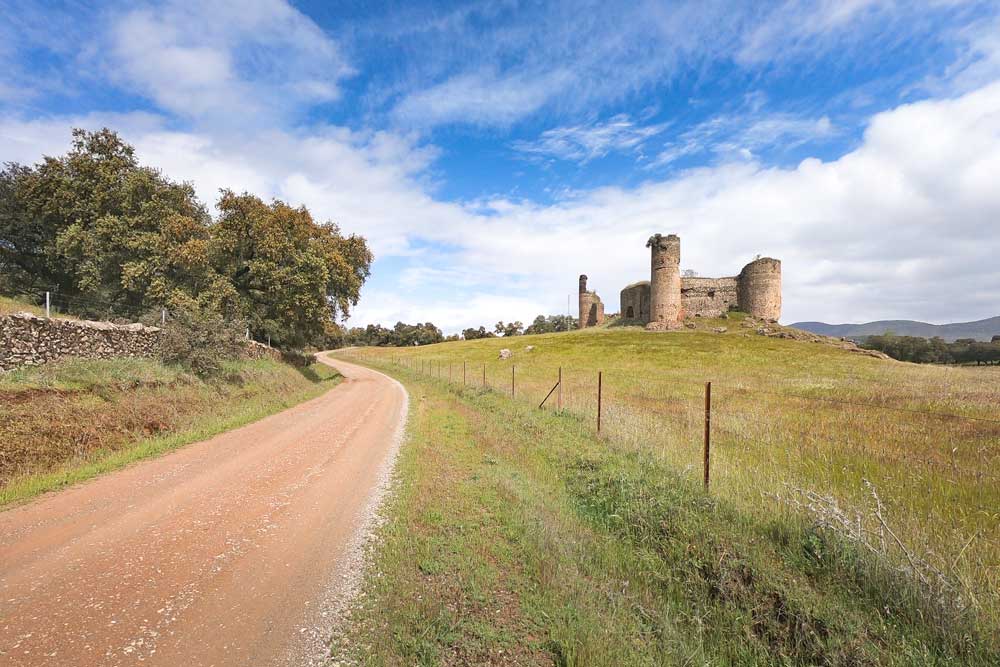
Vía de la Plata Overview
We walked it in April and it was great; warm, long days, fields covered in flowers. In June it starts getting hot. If you want to walk this route in fall weather-wise it’d be better to start in Santiago and walk south to Seville.
This Camino is not the best one to walk as the first Camino route. The walking days are long, 30 km/18,6 mi on average. Sometimes there is nothing in between, pilgrims have to carry a lot of water and some food with them. Walking for more than a month on one route is exhausting not only physically but emotionally, sometimes it feels like you’ll never arrive in Santiago.
Many pilgrims, especially locals walk the Vía de la Plata in parts over several years, which is not a bad idea. This way you don’t get sick of walking and every time you come “fresh” and probably enjoy the walk more. The Vía de la Plata was one of the few Camino routes with more Spanish people than foreigners on it. It’ll be helpful if you can speak some Spanish.
In my opinion, the Silver Route is one of the best Camino de Santiago routes for cycling. There are no mountains or steep hills, it’s pretty flat all the way. On the Vía de la Plata you can cycle on the walking route most of the way when on the other Camino routes you have to cycle next to the road a lot. Walking this route we saw more cyclists than pilgrims on foot. A big advantage of cycling is that you finish the Camino in 10 days or so compared to 40+ days of walking. It’s possible to combine the Vía de la Plata route with the Camino Francés. There is a split in Zamora; one route continues to Santiago, one route goes to Astorga where it merges with the French Way.
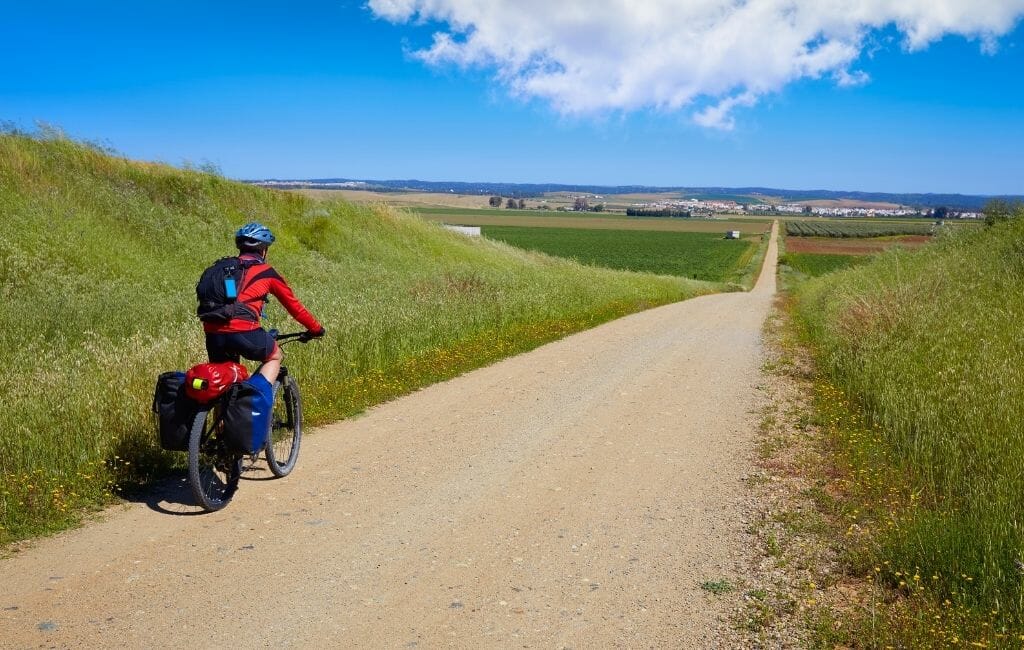
Likes
A very quiet route with few pilgrims. Beautiful scenery in spring; wheat fields, wildflowers. The route follows the Old Roman road past some towns with impressive Roman ruins such as Itálica and Mérida.
Dislikes
A very long route not many people can afford to take a 40-day holiday to walk the Camino After a couple of weeks, the scenery gets monotonous Public albergues on this Camino are more expensive, you pay about 10 Euro per bed compared to 6-7 Euro that you pay on most other Camino routes.
As you can see, there are many Camino de Santiago routes to choose from. Each route has unique features, lengths, and difficulty levels. I hope this list helps you to choose the right Camino de Santiago route for your pilgrimage.
Camino de Santiago Routes – Guest post by Alya Louw from Stingy Nomads
Alya is a content creator and co-owner of Stingy Nomads, a travel blog focused on outdoor and adventure activities. She and her husband Campbell are passionate hikers and divers. They’ve been traveling together for the last 8 years visiting the best diving and hiking destinations in the world. In 2018 they walked their first Camino de Santiago and fell in love with it. Since then they’ve completed 7 different Camino de Santiago routes and are planning to continue the Camino adventure with a new addition to the family, their daughter Summer. Check out their Facebook page and YouTube channel here>>
Camino de Santiago Routes – Pin for Later:
